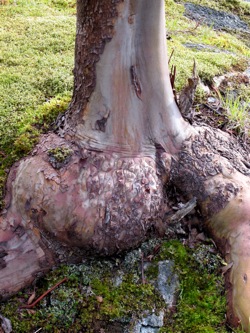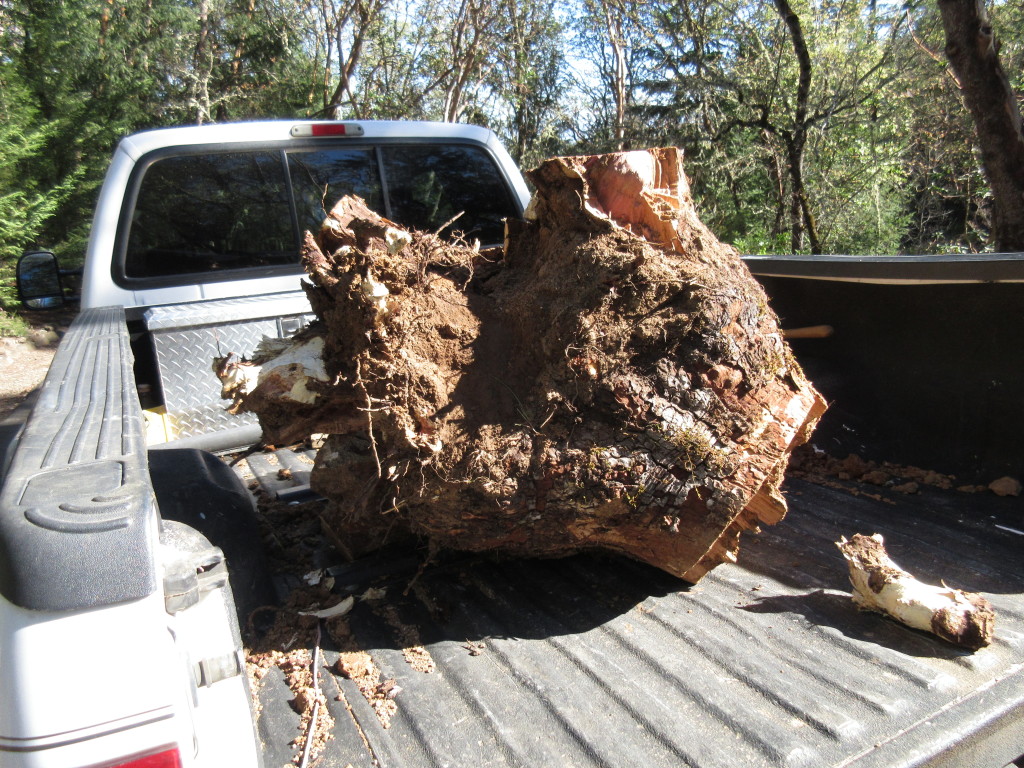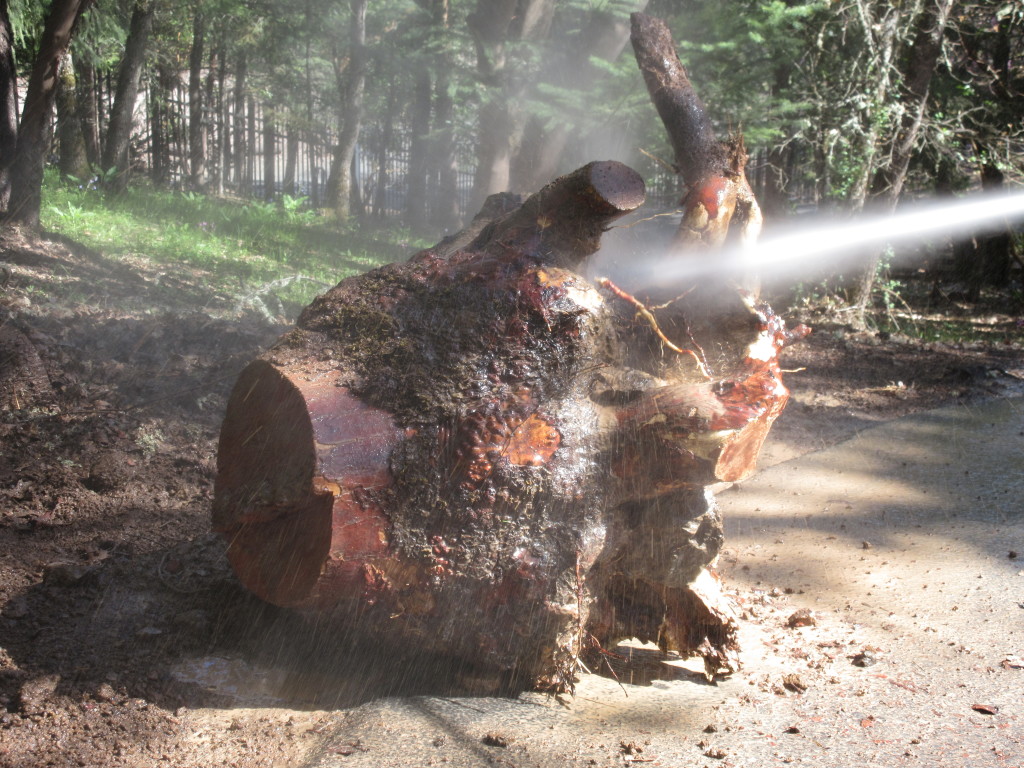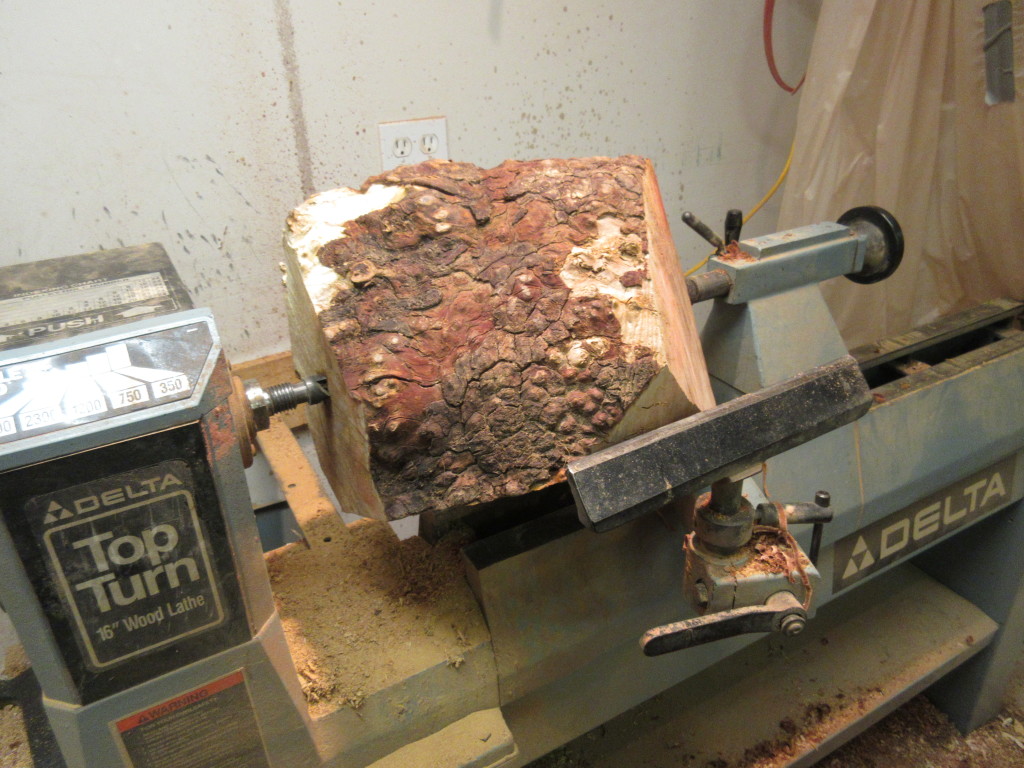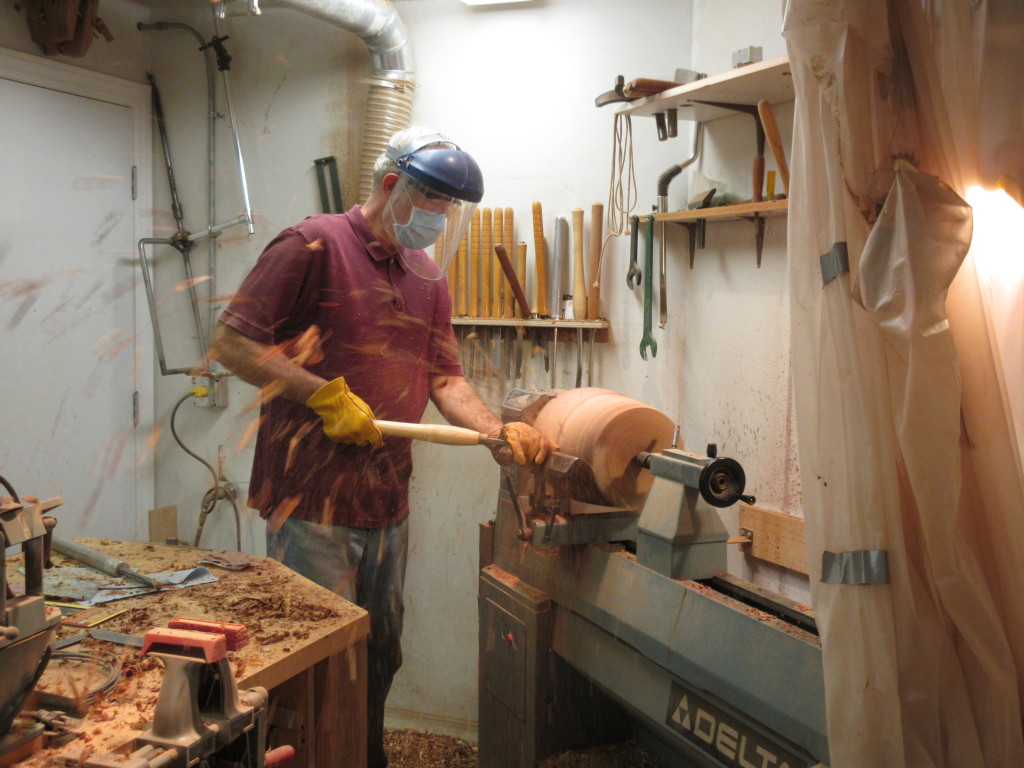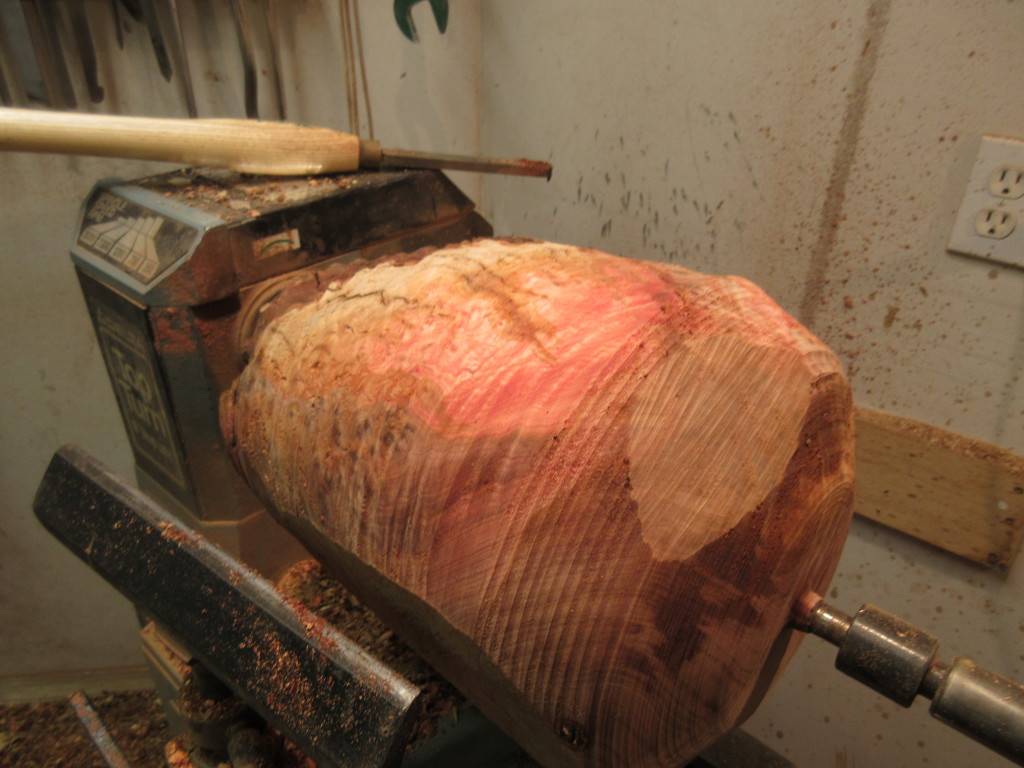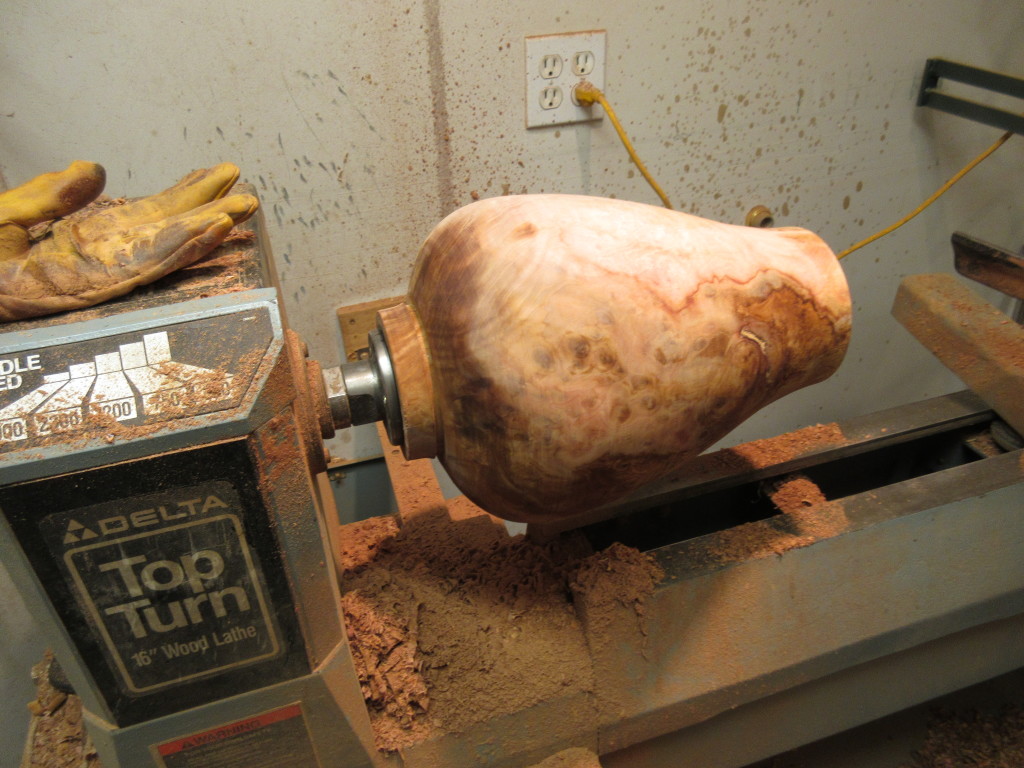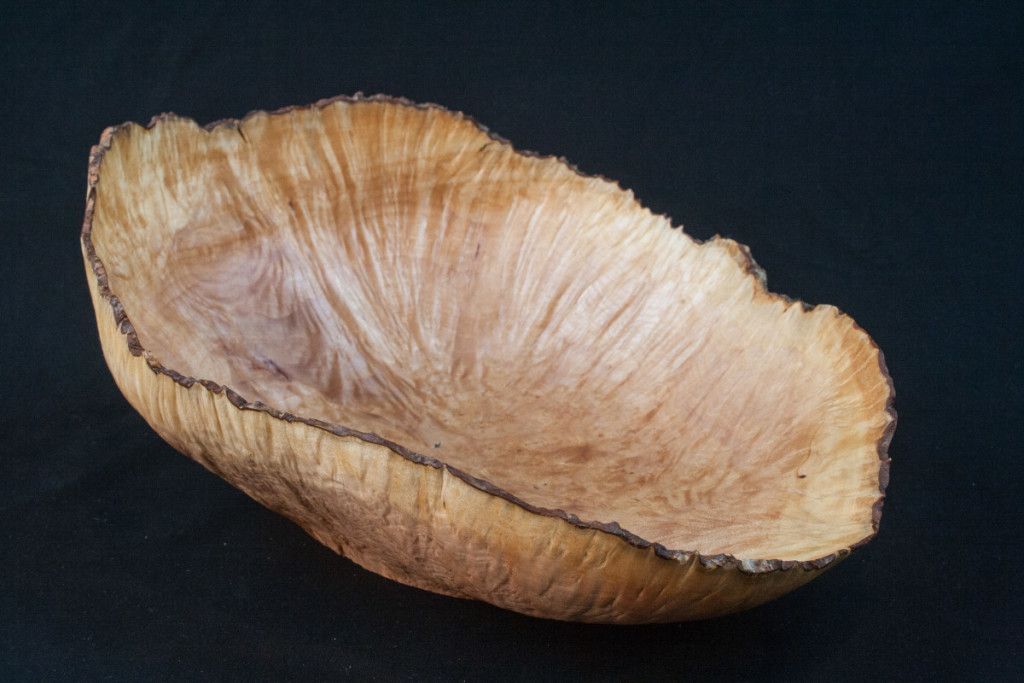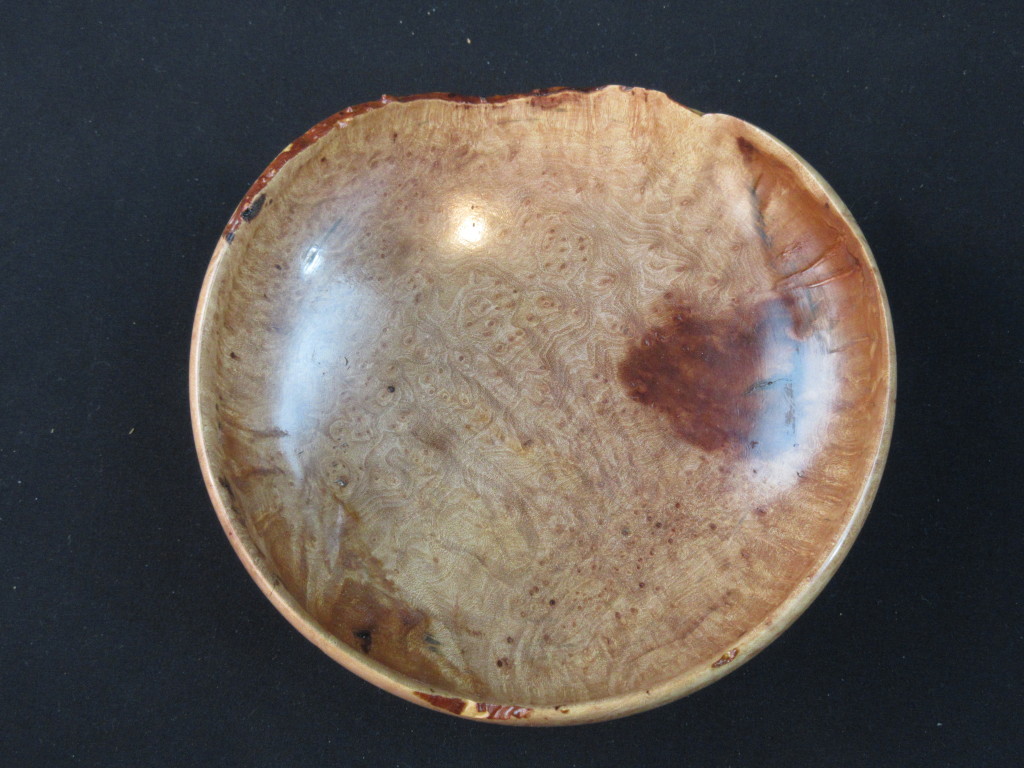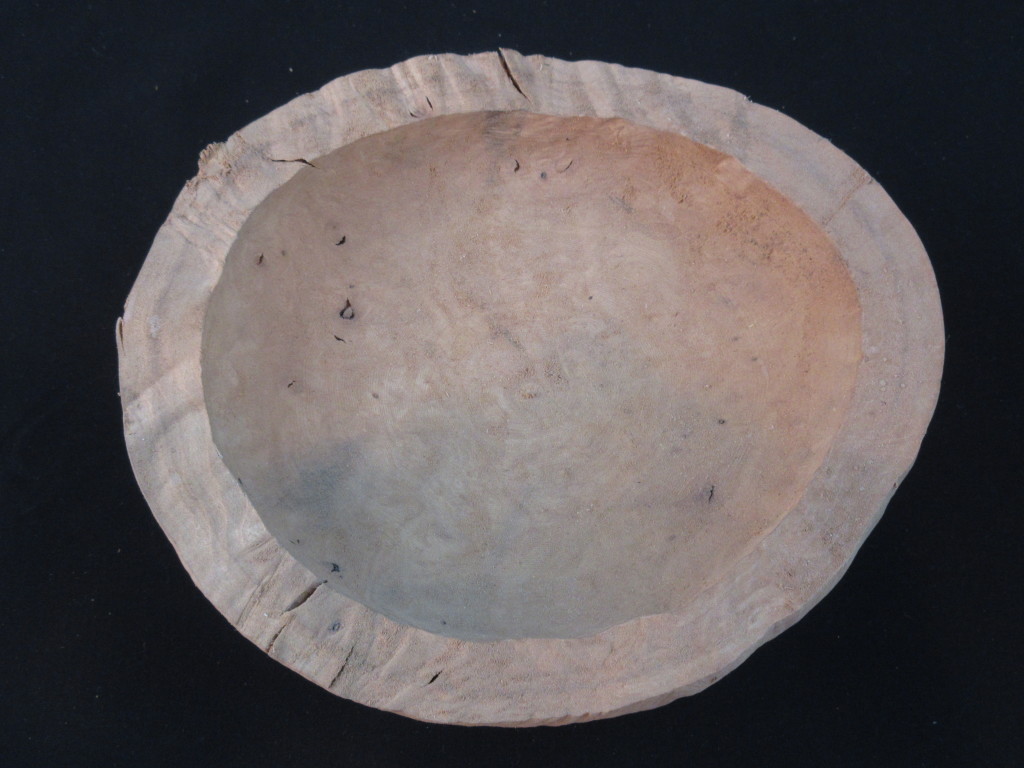Madrone – Arbutus menziesii
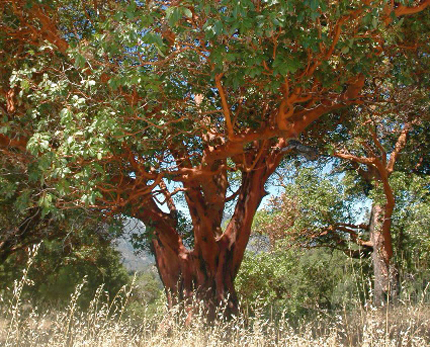
Arbutus menziesii is an evergreen tree with rich orange-red bark that when mature naturally peels away in thin sheets, leaving a greenish, silvery appearance that has a satin sheen and smoothness. In spring, it bears sprays of small bell-like flowers, and in autumn, red berries. It is common to see madronas of about 10 to 25 metres (33 to 82 ft) in height, but with the right conditions trees may reach up to 30 metres (98 ft).
Leaves are thick with a waxy texture, oval, 7 to 15 centimetres (2.8 to 5.9 in) long and 4 to 8 centimetres (1.6 to 3.1 in) broad, arranged spirally. They are native to the western coastal areas of North America, from British Columbia to California.
Madrone Burl – The Process
Madrone burl is found at the base of the tree and is partially underground. Only a small percentage of madrone trees have burl and size can vary greatly. It is difficult to harvest unless a large backhoe is used to pluck it from the ground. Some burls can weigh as much as a thousand pounds or more so the first job is to get it to the workshop. The next step is to power wash the burl and cut it into manageable pieces which then have to be further shaped for mounting on the lathe.

All this must be done in a timely manor so the burl does not start to dry out and begin cracking. Madrone is a very unstable wood and is known for changing shape significantly while drying.
The chunks are cut into blocks that can be mounted to the lathe. The turning process can now begin.
I use two methods for producing bowls, hollow forms and platters. The first method I call “morphing the piece”. These pieces will display a rippled smooth surface and are distorted in shape. The wood is not allowed to dry before being turned on the lathe. The bowl below was perfectly round and smooth when it was removed from the lathe. As it dried it morphed into the shape displayed below. And if the final thickness of the piece is thin enough, cracks will not develop or will be minimal.
The second method produces a final piece that is round and polished smooth. To get this result you must try to anticipate how much shrinkage and distortion will occur and compensate for that. Therefore you must leave the wall thickness large enough so that after the piece drys and distorts it can again be mounted on the lathe and made round. These pieces are more prone to develop cracking. It makes it impossible to do a hollow form piece with this method.
What is Spalted wood?
In this piece you will notice two distinct colors. The right side is spalted and the left side is not.
Types
Spalting in hardwoods is divided into three main types: pigmentation, white rot and zone lines. Spalted wood may exhibit one or all of these types in varying degrees.
Pigmentation
Also known as sapstain, or in its most common form, bluestain, this type of spalting occurs when the darkly-pigmented fungal hyphae grow in the sapwood parenchyma of a tree. A visible color change can be seen if enough hyphae are concentrated in an area. These pigmentation fungi often colonize wood via the rays, but are not considered decay fungi due to their non-destructive use of easily available wood.
While pigmentation fungi do not degrade the wood cell wall, this type of decay can lead to a reduction in toughness (amount of energy absorbed before breaking), and increased permeability. Pigmentation can occur on both hardwood and softwood, unlike other types of spalting which are more host specific.
White rot
The mottled white pockets and bleaching effect seen in spalted wood is due to white rot fungi. Primarily found on hardwoods, these fungi ‘bleach’ by consuming lignin, which is the slightly pigmented area of a wood cell wall. Some white rotting can also be caused by an effect similar to pigmentation, in which the white hyphae of a fungus is so concentrated in an area that a visual effect is created.
Both strength and weight loss occur with white rot decay, causing the ‘punky’ area often referred to by woodworkers. Brown rots, the ‘unpleasing’ type of spalting, do not degrade lignin, thus creating a crumbly, cracked surface which cannot be stabilized. Both types of rot, if left uncontrolled, will turn wood useless.
Zone lines
Dark dotting, winding lines and thin streaks of red, brown and black are known as zone lines. This type of spalting does not occur due to any specific type of fungus, but is instead an interaction zone in which different fungi have erected barriers to protect their resources. They can also be caused by a single fungus delineating itself. The lines are often clumps of hard, dark mycelium, referred to as pseudosclerotial plate formation.
Zone lines themselves do not damage the wood. However, the fungi responsible for creating them often do.
